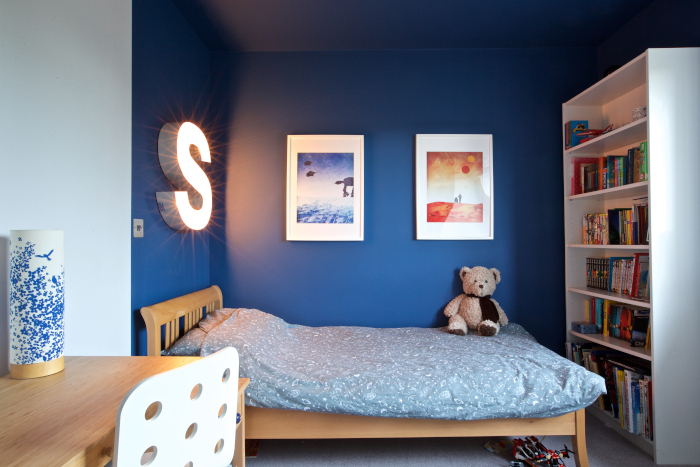
Image copyright Clair Strong Interior Design
Designing for children can be a lot of fun but there are some unique challenges you don’t see when designing a space for yourself or other adults. Children are constantly growing and changing, and so it is essential you design a space that grows with them. Children also have their own taste and preferences, and those may not gel with your own. Finally, a kid’s bedroom may need to serve multiple functions or multiple occupants, and so there can be a lot to think about at once.
With all that in mind, here’s part one of my tips for designing a kid’s bedroom. Check back next week for part two!
Think Long-Term
If you want to design a space that serves your child from infancy to their teenage years it’s essential that you think about the long term. You will likely need to redecorate and refurnish at least once during this period, but there are many ways to reduce the amount you’ll need to do.
First, choose durable materials in neutral colours for the carpet or flooring. The better the quality, the longer it will last (and it will potentially be easier to clean too). Opting for a neutral colour will see your child through various changes in taste.
If you think the colour of the walls will change frequently, choose paint instead of wallpaper or murals. It’s easier and often cheaper to repaint. Choose paint in a finish that can be wiped clean if necessary, and keep a spare tin on hand for any future touch-ups. In the room pictured above I used a pale grey paint for most of the room and then a deep blue to pick out the bed area. Timeless colours that will see the child through at least a few years.
Avoid filling the room with only children’s furniture as it will need to be replaced within a few years. If it’s in the budget, choose storage furniture of a high quality. Look for bookcases and wardrobes made from MDF, timber or other durable materials. These pieces will last a lifetime and can be maintained and repaired if necessary. You can also paint them quite easily if you want a more child-friendly colour palette.
A standard single bed will last forever (but remember to change the mattress every 8-10 years). When your child is very little, guard rails will keep them safe but can be removed as they get older. A single divan bed will provide additional storage while a raised loft bed allows you to put a desk or storage furniture underneath. Bunk beds can be great fun if two children are sharing a room, and some can even be taken apart and used as two single beds when the children are older.
As you can see there are plenty of ways to ensure a child’s bedroom grows with them. Next week I’ll tackle some of the other issues that arise when designing for children.



